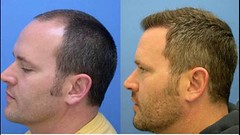Is a Physician a Doctor?
In popular language, the terms ‘doctor’ and ‘physician’ are often used interchangeably. The answer to the question, ‘is a physician a doctor?’ would be a definite ‘yes’. However, not all doctors can be termed as physicians. This might perplex a regular person, as the common interpretation of a doctor is an individual who practices medicine. While this is true, the nuances are a bit more complicated in the professional sphere of medicine.
Let’s clarify this with a more exact definition. Essentially, a physician is a medical professional who is authorized to practice medicine. A physician’s primary role includes diagnosing and treating diseases, prepping care plans for patients, conducting examinations, and understanding patient history. They are entrusted with the responsibility of optimizing individuals’ overall health.
On the other hand, the term doctor is a much broader concept. It encompasses a range of professions within the medical sphere – not just those centered around medical practice. A doctor could be a dentist, veterinarian, or even a chiropractor. In essence, ‘doctor’ is a notion that envelops a multitude of specializations in healthcare.
A practical way to differentiate one from the other is by looking at the type of degree one holds. An individual with an M.D (Doctor of Medicine) or D.O (Doctor of Osteopathic Medicine) is referred to as a physician. These degrees specifically pertain to medical practice. There are other kinds of Doctorate degrees in the field of healthcare – such as a Ph.D. in various disciplines of medicine, dentistry, and chiropractic care. However, while these holders can be called doctors, they are not physicians.
A frequent question that arises in patients’ minds is, ‘Are physicians and doctors different in terms of their ability to perform surgeries?’ The answer is not black-and-white. Only a certain subset of physicians, referred to as surgeons, are qualified to perform surgeries. Likewise, certain non-physician doctors (like dentists) may also execute specific surgeries. Thus, having the ability to carry out surgeries is more about specialization than the distinction between a physician and doctor.
Now, you might be wondering, ‘Where does the nurse practitioner role or care providers in non-traditional medicine fit into the doctor vs. physician discussion?’ This is an interesting gray area. These professionals – while extremely vital in healthcare – are not physicians or doctors. Albeit, some of them can prescribe medications and manage patient care – depending on their jurisdiction’s laws.
With all this confusion, it is crucial to know who you’re reaching out to for your healthcare needs. For instance, if a person is seeking help to reduce their lower cheek fat, they might be better off consulting a specialized doctor like a cosmetic/plastic surgeon or a dermatologist rather than a general physician. These specialists are doctors, but they are not physicians in the specific term’s context.
So, to round off, yes – a physician is a doctor. However, using these terms interchangeably in every scenario might lead to a communication gap in some professional healthcare situations. Knowing the differences can help individuals to rightfully identify the professionals, and ensure they seek care from the most appropriate source.

